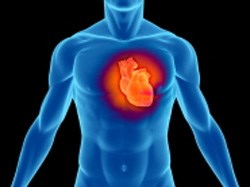
Top stories





Marketing & MediaFormer FNB CEO Michael Jordaan backs Adbot to build tools that multiply marketing capacity
AdBot 17 hours

More news


















The study, led by Professor Paolo Madeddu, Chair of Experimental Cardiovascular Medicine in the School of Clinical Sciences at the University of Bristol and Professor Costanza Emanueli, co-author, who is leading on microRNA research in the Bristol Heart Institute, is published online in Circulation Research: Journal of the American Heart Association.
The study, funded by the British Heart Foundation (BHF) and a National Institute for Health Research (NIHR) grant, looked at whether human mural cells, known to scientists as pericytes, cells that stay around, can stabilise blood vessels after a heart attack.
The researchers, using a mouse model, have demonstrated for the first time that pericytes expanded from redundant human leg veins are able to stimulate new blood vessels (neovascularisation) and help with the recovery after a heart attack.
The study found that upon transplantation pericytes relocate around the vessels of the peri-infarct zone and establish with them physical contacts allowing the transfer of genetic material, microRNA-132 (miR-132). MicroRNAs are small non-coding RNA sequences that modulate the expression of genes by binding to messenger-RNA and inhibiting it. One microRNA can inhibit many genes simultaneously. The study shows that the transfer of miR-132 from pericytes to endothelial cells inhibits a gene that acts as a negative regulator of cell growth. This unlashes endothelial cell proliferation and the formation of new vessels.
Professor Madeddu said: "Although bone marrow cell therapies dominate today, continued research on other types of stem cells is mandatory to achieve optimal treatment of cardiovascular disease.
"Human pericytes could be an invaluable source for future applications of cardiovascular regenerative medicine."
The researchers demonstrated that transplanted pericytes relocate around and support the growth of blood vessels in the heart, suggesting an unusual growth of these cells is instrumental to therapeutic benefit. The physical contact between pericytes and resident endothelial cells may strengthen the nascent vascularisation, thus reducing micro-vascular permeability and myocardial oedema, which are acknowledged to have a negative impact on cardiac function.
The discovery that pericytes use microRNAs to communicate with neighbouring cells reveals a new mechanism used by these cells to influence vascular function. Likewise, pericytes can sense signals from the endothelium and communicate biochemical information to surrounding tissue.
Dr Helene Wilson, Research Advisor at the BHF, which co-funded the study, said: "This exciting discovery is one more step towards mending broken hearts. It shows that 'one man's trash could be another's treasure' - using cells from leftover vein normally binned after heart bypass surgery, to try to repair heart damage in mice.
"While it's early days, the study shows that pericytes may have potential to help repair the heart after a heart attack. This is a vital goal for preventing heart failure, which currently affects more than 750 000 people in the UK and has a worse prognosis than many cancers."
Transplantation of human pericyte progenitor cells improves the repair of infarcted heart through activation of an angiogenic program involving micro-RNA-132, Rajesh Katare MD PhD, Federica Riu PhD, Kathryn Mitchell PhD, Miriam Gubernator PhD, Paola Campagnolo PhD, Yuxin Cui PhD, Orazio Fortunato MSc, Elisa Avolio MSc, Daniela Cesselli MD PhD,Antonio Paolo Beltrami MD PhD, Gianni Angelini MD PhD, Costanza Emanueli PhD, Paolo Madeddu MD, Circulation Research, published online August 25, 2011.
Source: University of Bristol